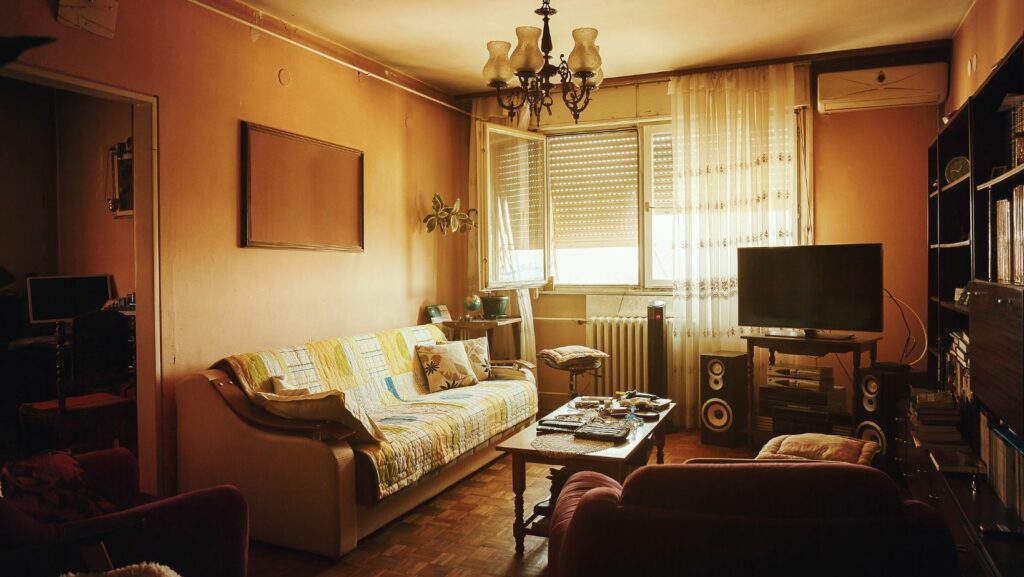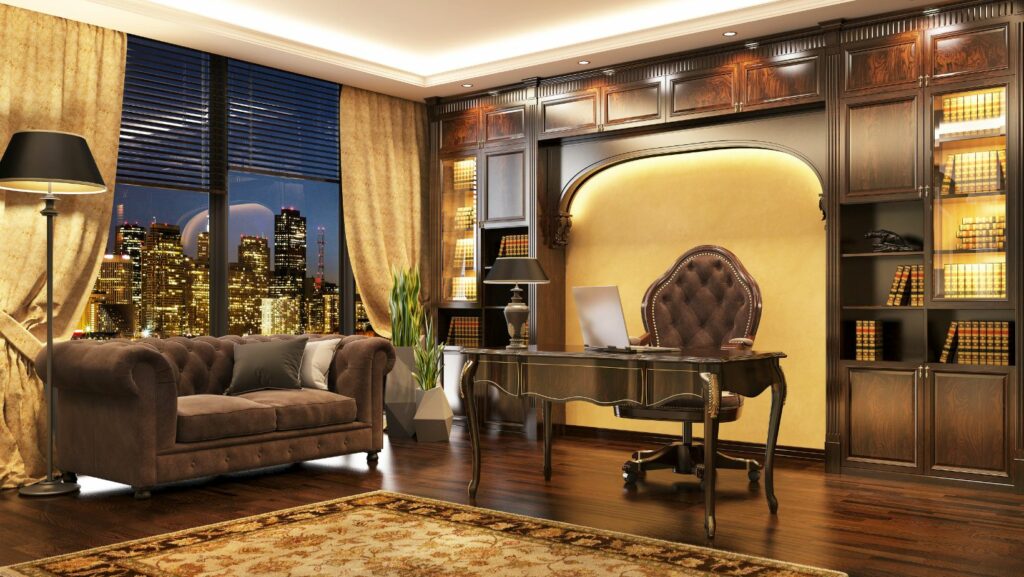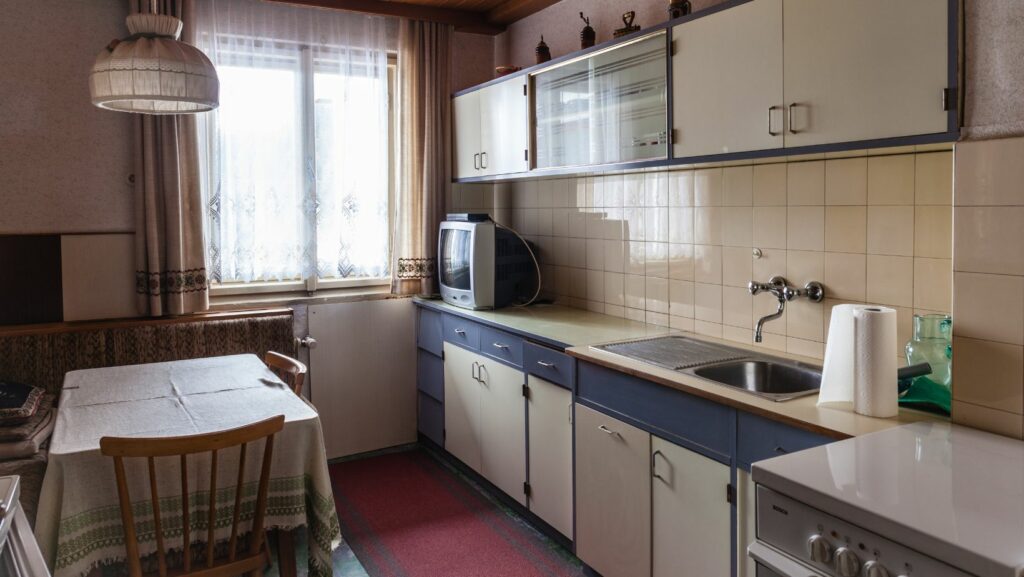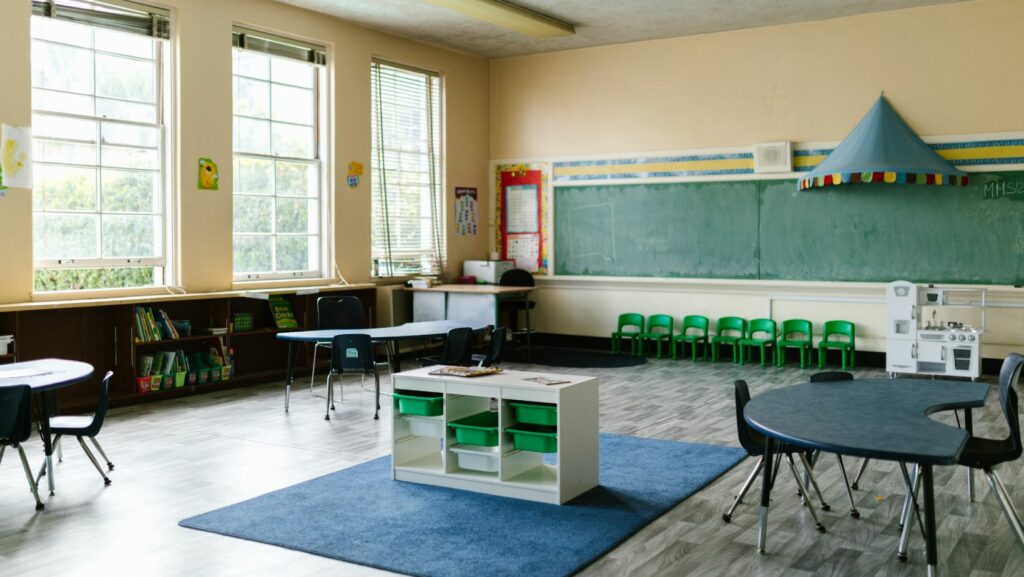Step back in time to the 1940s – a decade of style that’s often overlooked but brimming with charm and elegance. The world was in flux, and so was interior design, shifting from the glamour of the 30s to a more practical, yet still stylish, aesthetic. This era’s interior design reflects the resilience and creativity of the time, making it a fascinating study for design enthusiasts and history buffs alike.
1940s Interior Design

Marked by resilience and inventiveness, the 1940s interior design scene emerged as a force to reckon with. It bucked trends, instead drawing a perfect equilibrium between practicality and style. There was no room for excess, given the austerity of the times. Yet, the lack of abundance helped mold a unique aesthetic sense into being. Traditional patterns, including floral and checkered, breathed life into homes, while modern lines added a touch of sophistication.
This harmonious blend, while born out of necessity, soon transcended into a tasteful style statement. The colors, primarily soft pastels and increasingly vibrant hues, underscored the growing optimism of the period. Furniture designs pivoted towards functionality, affirming the spirit of the times. For instance, the use of fold-away furniture rose dramatically, reflecting the need for utility and space conservation.
Throughout the decade, the advantageous circumstances influenced the local artisans. Thus began an influx of handmade items, lending an artful touch to homes. This movement chiseled the character of 1940s interiors and kick-started a trend that resonates to this day.
Key Elements of 1940s Decor

Four primary factors form the basis of 1940s interior design. First, patterns emerged as a significant component. As mentioned previously, traditional themes such as floral and checkered became primary choices. As a second factor, a sophisticated blend of colours showcases the era’s character. A combination of soft pastels and vibrant shades served to mirror the growing optimism in those years. Unavoidably, furniture, the third factor, played a pivotal role. Designs were practical, conserving space with a rise in furniture pieces that could fold away. Lastly, handmade items made by local artisans added a personal and artistic flair to the design, playing a part as the fourth element.
This section discusses these four aspects – Patterns, Colours, Furniture, and Handmade Accessories, acting as the keystones of 1940s home decor. Tailoring old materials and finding innovative ways to create timeless designs underscored the functionality yet beauty of this decade.
Impact of World War II on Design

World War II exerted a considerable influence on 1940s interior design. The exigencies of the war spurred a unique blend of practicality and style, underpinning the design ethos of the 1940s. Constraints on materials and manpower led to innovations in design thinking, elevating creativity and function over frills and excess. According to the Victoria and Albert Museum, utility furniture emerged, embodying the spirit of the era: sturdy, functional, and efficient. Fabric rationing during the war saw the increased use of iconic patterns like floral and checkered designs, presenting a resilient charm amidst adversity.
Reallocation of metal for the war effort, for instance, gave rise to wooden furniture’s predominance, often defined by clean, modern lines. Pastels and vibrant hues, although popular, were used judiciously, guided by the availability of dyes.
Preserving 1940s Interior Design
It’s clear that the 1940s interior design era was not just a time of constraint but also one of creativity. The blend of traditional patterns and modern lines showcased a balance between aesthetics and functionality. The emergence of utility furniture and the dominance of wooden pieces with clean lines were inspired by fabric rationing. The judicious use of pastel and vibrant hues was a testament to the strategic approach to resource availability.
Fold-away furniture and compact designs demonstrated a smart use of space, a trend that continues to be relevant today. These design characteristics, born out of wartime necessity, have proven to be timeless. They’ve truly shaped the interior design landscape, emphasizing the importance of creativity, function, and resilience.



